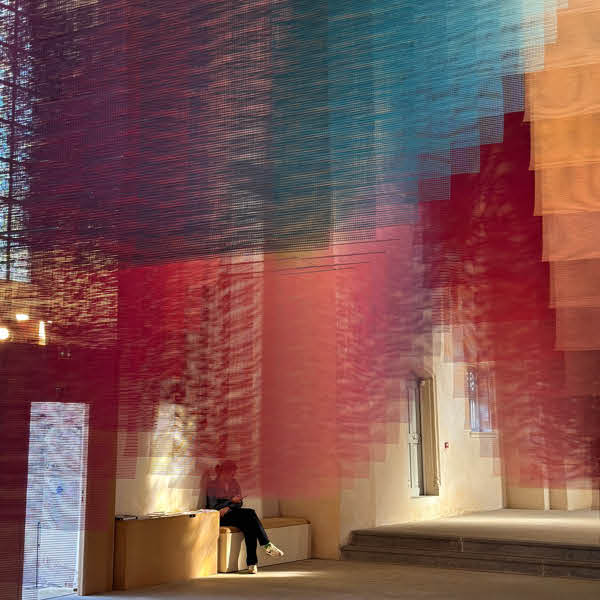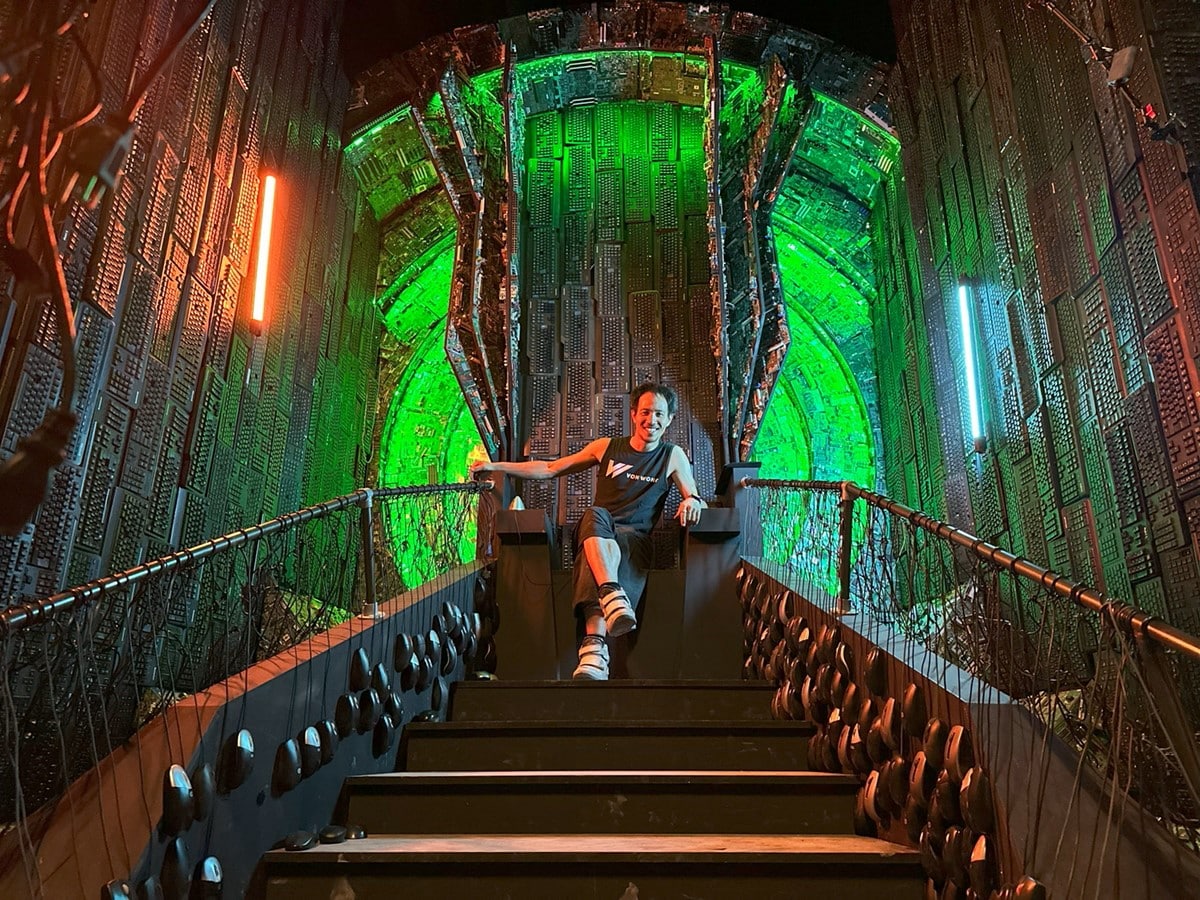
Artist Benjamin Von Wong is known for his innovative installations that spotlight important social and environmental issues. For his latest immersive installation, he focused on the serious issue of e-waste by transforming a space in Arcadia Earth’s Toronto Exhibit into an environment championing the Right to Repair movement.
This movement calls on big tech companies to make parts more affordable and stop shutting down independent repair shops in an effort to keep consumers purchasing new electronics. It's a critical issue, particularly when one realizes that 800 laptops’ worth of electronic waste are thrown away every second.
It took Von Wong and a dedicated team six months of planning, three weeks of fabrication, and 5,000 pounds of electronic waste to make their vision come to life. After breaking down keyboards, motherboards, computers, cables, and household appliances, the team crafted what appears to be a large electronics throne.
Visitors are invited to climb the stairs and take a seat, which not only gives them the perfect photo opp but also allows them to contemplate the destiny of our technology. But it's not all visual; the experience is enhanced by musical and spoken word soundtracks, as well as augmented reality QR codes that give further information about getting involved with the movement.
Von Wong's installation at Arcadia Earth will be on view for one year. We had the pleasure of speaking with the artist about this installation and why he focused on the Right to Repair movement on this occasion. Read on for My Modern Met's exclusive interview.
Why is it so important for you to use your creativity to help raise awareness about issues like Right to Repair?
I've dedicated my entire career to raising awareness for different environmental issues. Over the last decade, the goal has been to try and connect big global issues with small actions that point people towards tackling the root cause of different issues.
What I like about the right-to-repair movement is that it can help reduce the amount of electronic waste created by focusing on better design. Of course, that alone doesn't resolve the issue, but it's more motivating and inspiring than just telling each and every person to monitor their own consumption habits.
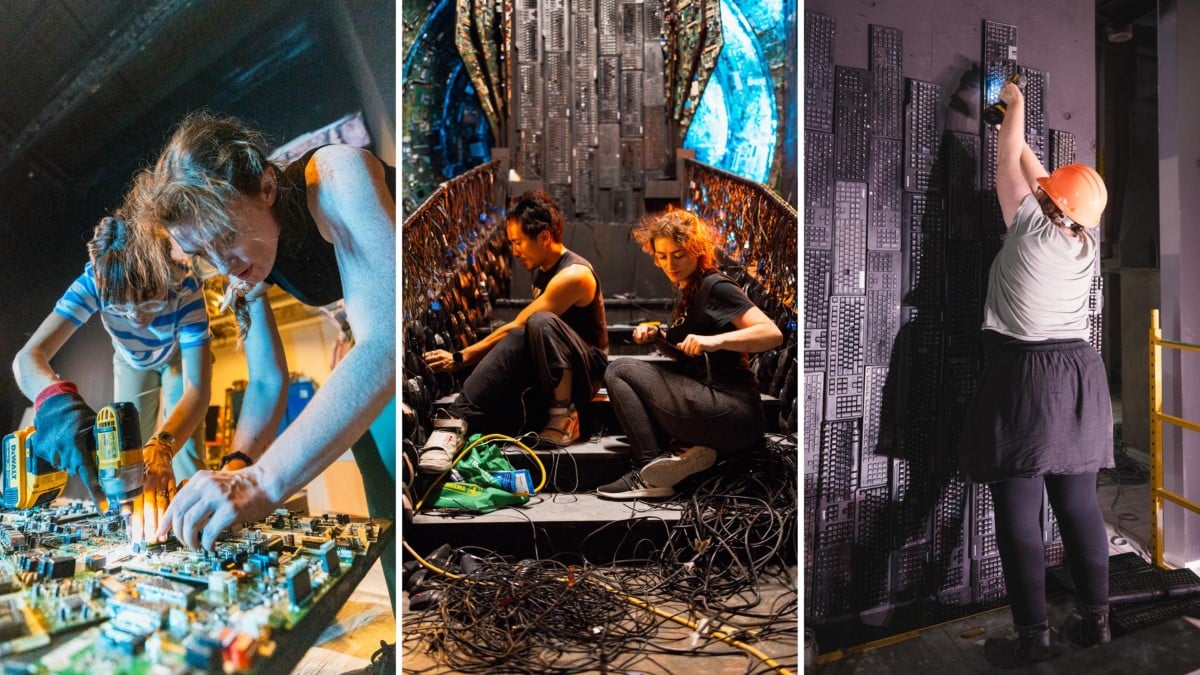
Obviously, creating an installation of this magnitude is a team effort. Can you share a bit about the team that works with you on these projects?
So far, most of my projects are built with unique teams that are assembled from scratch. It's a combination of friends, family, volunteers, and folks that I manage to hire who are willing and interested in contributing to the cause.
What was the most challenging part of putting this together?
The greatest challenge this time around was definitely building a team that could pull the project together with a limited budget. You can't really cut corners on build safety and security, especially since the installation had to be up for an entire year—so finding the right fabricators/builders, followed by the right lighting support was what was particularly challenging.
I always like to think that if I had more money, it would be easier—but I'm sure our creative ambitions would have grown proportionally!
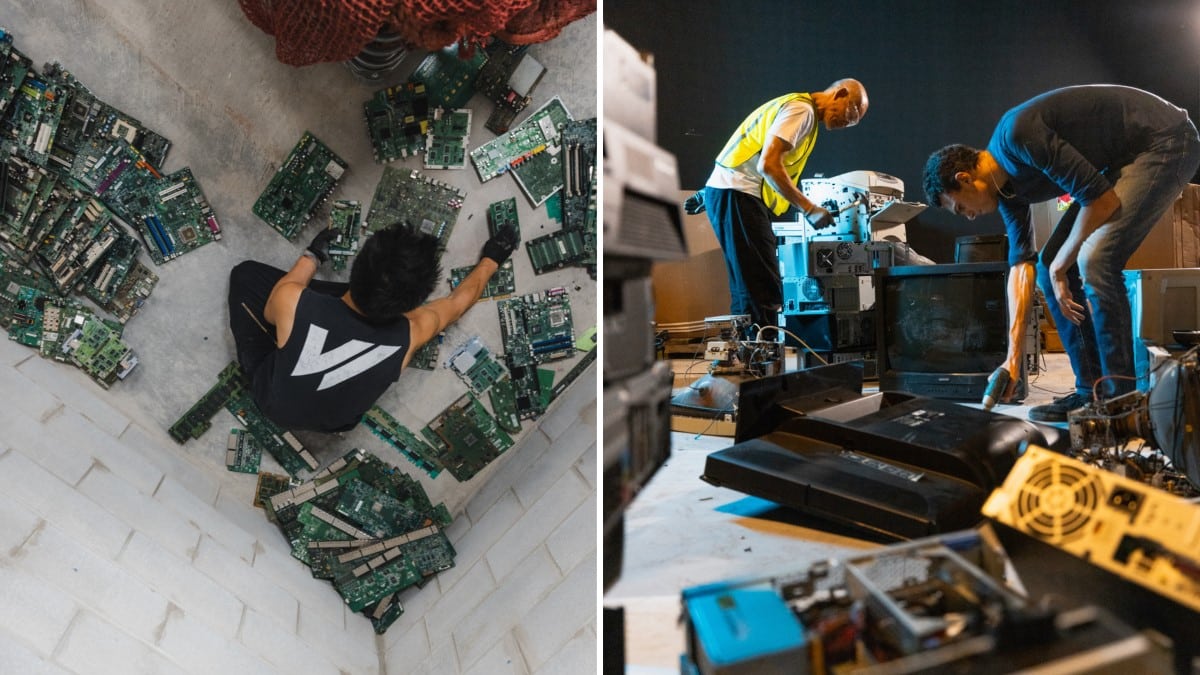
Where did the electronics for the project come from, and what will happen to them at the end of the installation?
All the electronics were sponsored and delivered by a small non-profit called Uni-Recycle. They're a small social enterprise that really wanted to help support us in championing the right to repair. Our agreement is that when the installation gets taken down, we return the e-waste back to them. Prior to giving us all the material, they already went through and made sure none were repairable.
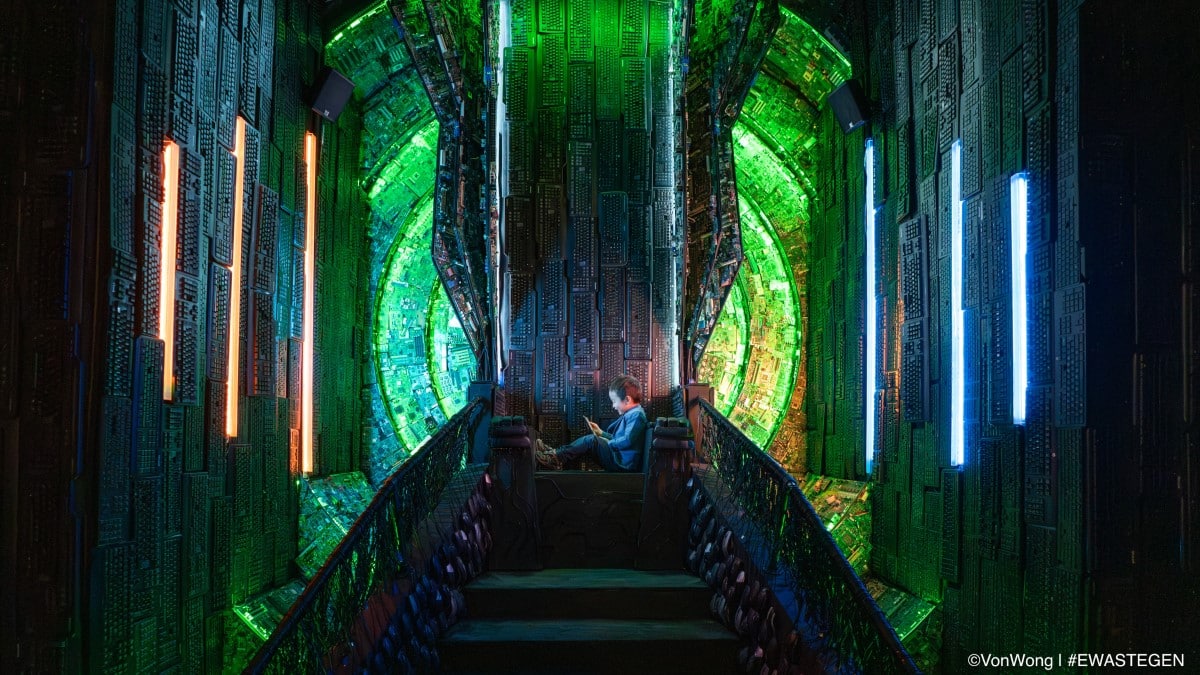
Can you explain a bit more about the “right to repair” movement and why it's so important?
70% of the world’s toxic waste in landfills comes from discarded electronics, and although some of that could be resolved by better recycling, we need more sustainable and repairable products. The Right to Repair movement demands that companies provide affordable parts, tools, and documentation to independent shops and product owners, allowing us to hold on to our products longer.
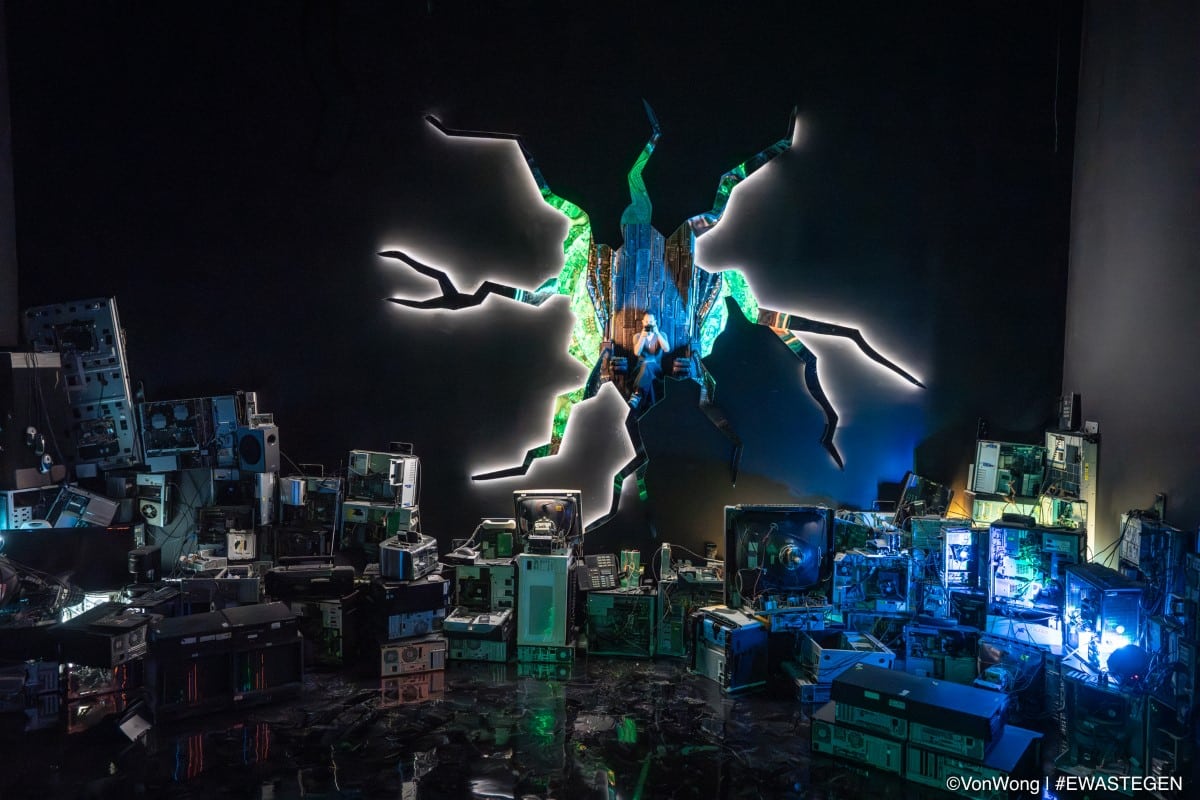
What can people do if they want to get involved?
It kinda depends on where people live, but if you’re in Canada, read more about Equiterre’s fantastic Right to Repair report and sign the petition calling for Right to Repair at the federal level. If you’re in the U.S., find your state on Repair.org and see how you can take action.
Otherwise, I think the best course of action is to search “right to repair” followed by “where you live.”

What do you hope that people take away from the work?
I see the role of my art as an attempt to ignite conversations. It helps those within the movement engage the public in a unique and different way, and it helps draw those who wouldn't normally be interested to potentially learn more.
As long as people see it, share it, and maybe start getting curious, I think my job here is done.
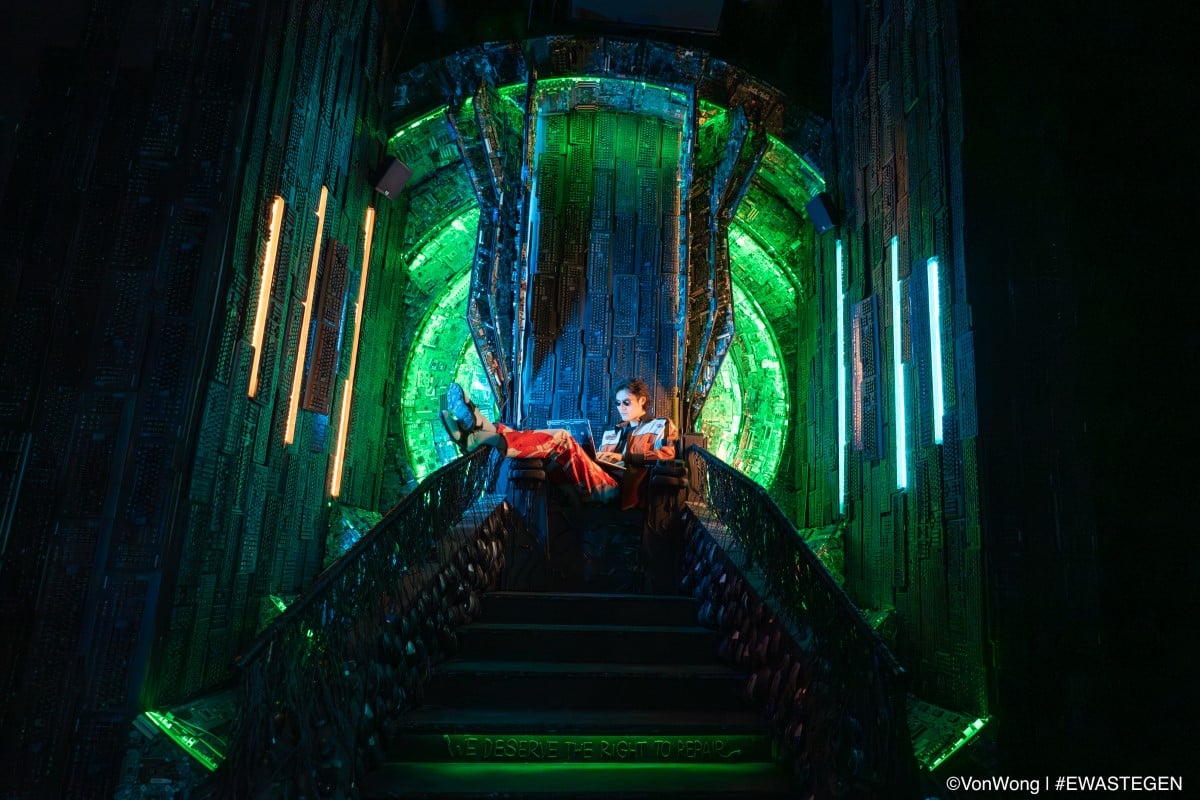
What's next?
I'm actually in Thailand right now, preparing a giant installation out of Bamboo Biochar. Biochar is responsible for 89% of verified carbon removal credits… and yet barely anyone knows about it. I can't wait to share it with you when it's ready.














































































